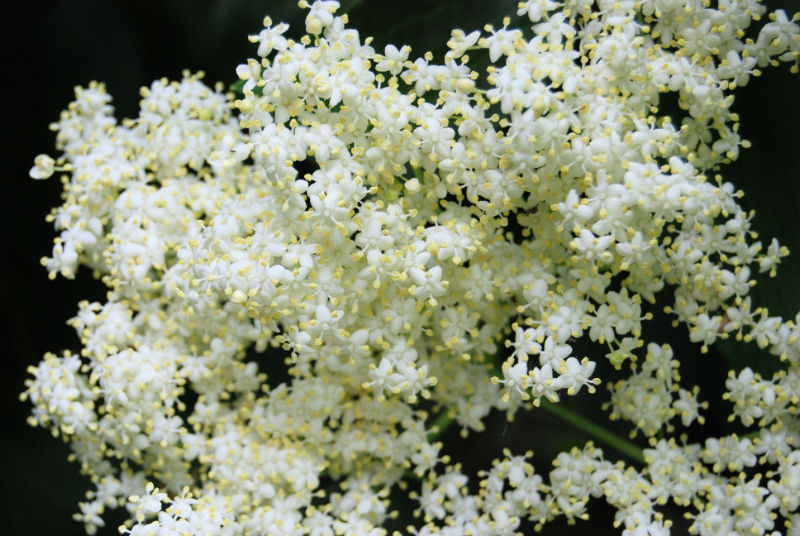Campsite cooking: Elderflower cordial

Guyrope Gourmet, Josh Sutton, serves up an English classic made from ingredients plucked from nature
I’m often asked, when I’m out there giving cookery demonstrations at food festivals and other such events, if I’m a forager. Sadly, I am forced to admit that I’m more confident when it comes to forgery than foraging. I simply don’t know enough about what is safe to eat from the hedgerow and what is not, to call myself a forager.
Foraging is, however, becoming more popular as people learn about food for free. From time to time it may even grab newspaper headlines as people seem to become hysterical about folks who go out gathering mushrooms and other fungus in our woodlands. We hear of organised gangs of foreigners reaping fortunes from nature and other such nonsense. While collecting mushrooms and wild plants is still very popular in many other countries, it seemed to have fallen out of fashion in Britain.
Whereas foraging was once a widespread and popular means of supplementing the family diet on these shores, it now remains the practise of a few “specialist” keen amateurs.
I have had the absolute pleasure of working with a number of professional foragers who make their living from writing about, and demonstrating to others, the ins and outs of gathering food safely from the wild. A few years back, while cooking up at Wigtown Book Festival, I realised that I didn’t have a vegetarian option on the menu, and it was a local forager who came to the rescue. Mark Williams, booked to lead a foraging walk at the festival, turned to me and said, “Don’t worry Josh, I’ve got a load of hedgehog mushrooms I foraged yesterday – how about a fricassee?”
 Between us we whipped up a huge bowl of linguini, which was way more popular than the paella I had prepared earlier! Mark is based in Dumfries and Galloway and goes by the name of markwildfood on social media. His website is a treasure trove.
Between us we whipped up a huge bowl of linguini, which was way more popular than the paella I had prepared earlier! Mark is based in Dumfries and Galloway and goes by the name of markwildfood on social media. His website is a treasure trove.
While I would never call myself a forager, I am familiar with a few items from Mother Nature’s larder that won’t either send me off on some psychedelic mind-bending trip, or just plain kill me, and thanks to a book I received recently, that list is now growing. The Forager’s Calendar by John Wright, is a wonderful compendium of nature’s edible bounty, laid out in a month by month guide to what’s in season.
What is great about The Forager’s Calendar is that it includes hundreds of plants, other than mushrooms and fungi, and to know just when wild marjoram is in season and available to flavour your pasta dish (June) is a real bonus to the camping community. For those camping on the coast, there are a host of different edible seaweeds to gather and try, as well as marsh samphire, which goes so well with fish.
I thought I would offer a recipe based on a plant that comes into bloom at this time of year. In fact it may have made an appearance a couple of weeks earlier in the south, but June in Yorkshire, where I’m from, means elderflower cordial. Elderflowers are easily recognised if not just for their wonderful lemony sweet aroma. They grow in hedgerows on short trees with light brown crumpled soft bark. I think I’m right in saying that this is a first for the Guyrope Gourmet, as I’ve not offered a recipe for a drink before, but this quintessential English cordial recipe is ever so simple to make it seems daft not to suggest it.
You can gather the flower heads and prepare it easily on the campsite and leave it to steep overnight so you can have fresh elderflower cordial in the morning with your bacon and eggs. I would suggest picking a few fresh field mushrooms to go with the fry-up, but as I said, I don’t know enough about fungus.
READING LIST
The Forager’s Calendar by John Wright (Profile Books: 2019)
Food for Free by Richard Mabey (Collins: 1972)
Wild Cooking by Richard Mabey (Vintage: 2009)
ELDERFLOWER CORDIAL (makes approx 3 litres)
INGREDIENTS
25/30 headelderflower blossom
3 unwaxed lemons
2kg granulated sugar
75g citric acid
3 litres boiling water
Fizzy water, for drinking
METHOD
Wash off the flower heads, checking to remove any wildlife. Place the sugar in a large stockpot and pour over three litres of boiling water, giving it a good stir to help the sugar dissolve. Slice the lemons and add them to the sugar solution along with the citric acid. Then add the flower heads, cover with clingfilm and allow to steep for 24 hours. Strain through a muslin cloth in a sieve and decant into three sterilised litre bottles. Dilute to drink with fizzy water.









Recent Updates
Camping barbecue: our guide to cooking up a storm this summer
Is there anything more British than sausages grilled on an open flame and dropped on wet grass? Camping and barbecues go hand in hand, which is why ...
Our family camping checklist: everything you need to pack
Sure, you’ve packed the tent and the sleeping bags – but what about slip-on shoes and glow sticks? These are ...
Our guide to planning the perfect camping road trip
Roll down the window, pop on those shades and crank up the volume – it’s time for a road trip. Get ready for ...
Camping in Europe: our 12 top tips
If you’ve not camped in Europe before, there’s a few tips and tricks you’ll need to avoid some continental ...
Solar power for camping: all you need to know
Staying connected in the great outdoors is easier than ever with a solar charger – or is it? How reliable are ...
Wild camping kit list: everything you need for your next adventure
Make sure you’re ready for anything with this list of lightweight camping gear and clothing, including ...
Camping furniture: all you need to know to make your tent a cosy haven
We delve into the essentials of camping chairs, camping tables, and kitchen and bedroom furniture, ensuring ...
Camping lights for tents: What you need to know
We will guide you through all the lighting options available for you and your tent, including interior ...
Camping kitchen: all you need to know
In the great outdoors, a well-equipped camping kitchen transforms mealtime into a delightful adventure ...
How to pack away your camping gear for winter
A complete guide to packing and storing your gear at the end of the season ...
Other Articles
Camping guide to trailers
Trailer stash or trailer trash? Being able to carry lots of other gear when you go camping isn’t such a bad idea, is it? Nick Harding looks at the ...
Winter camping: all you need to know to keep warm
Winter doesn’t have to mean the end of the camping season. With good preparation and the right gear, there’s ...
Camping toilets: a complete guide
If you are wild camping, camping off-grid or the campsite you book onto doesn’t have toilet facilities, you ...
Top tips for camping in windy weather
How to make sure your tent stands up to gusty conditions ...
Camping tents: a complete guide
If you're considering buying a camping tent, whether it's your first time or you're a seasoned camper, making ...
Camping sleeping bags and beds: a complete guide
When it comes to camping, there's one essential item that can make or break your outdoor adventure: the ...
Camping gas: how to use gas on the campsite
A complete guide to using camping gas appliances safely on the campsite, from choosing the right stove to ...
Camping storage: a complete guide
Having problems knowing where to put all your gear when you're camping? Read our top tips and see some great ...
Camping electric hook-up: a complete guide
This is everything you need to know about using electricity on a campsite, including how to hook up ...
How to pack all your camping gear into your car
Planning a family camping holiday? Find out the best way to fit all the kit you need into your car boot, roof ...